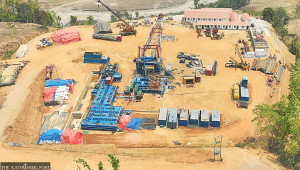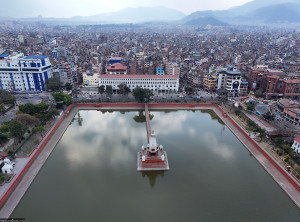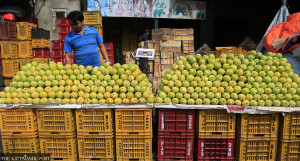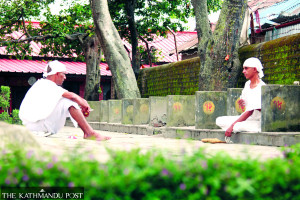Gandaki Province
A local unit in Baglung struggling to stop out-migration
Rural settlements were connected to road networks a few years ago but that has not stopped people from moving out.
Prakash Baral
Until three years ago, Raydanda of Baglung Municipality Ward No. 11 had no road connectivity. For the local residents, reaching the district headquarters would take around six hours on foot. The nearest health post was three hours away and the nearest school two hours away. The remoteness of the area led to many families migrating to Chitwan and Nawalparasi districts.
But things have changed since the local level elections in 2017. Now, almost all the settlements in Raydanda are connected to the road network. But the infrastructural development has not stopped villagers from moving out.
“The budget for infrastructural development in the ward increased after the local level elections which helped expedite many projects,” said Ratnakhar Gautam, a villager. “But people continue to leave home because there is no employment in the villages. It’s hard to make a living here.”
Investment on road, drinking water and agriculture development projects increased further after the municipality enlisted the ward as a ‘special area’ because of its difficult geography.
“Around Rs 30 million was spent in the development and upgradation of roads in the past three years,” said Gyanendra Gautam, the chair of Ward No. 11. “Rs 100 million was invested on drinking water projects, irrigation, health posts, schools and development of other infrastructure.”
The geographical remoteness of the area is one of the reasons why people are leaving the villages, says the ward chair.
“Out-migration is still rampant here. The road connectivity has, in fact, made it easier for people to migrate,” Gautam said. “Unemployment is also an issue here. We are working towards creating employment opportunities for the youths in the villages.”
Empty houses and barren fields have become a common sight in the villages, says Ratnakhar.
Around 10 families in Halhale, seven in Mauribhir, a dozen in Sikhadip and more than a dozen in Ramtola have left their homes in the past two years, according to Tham Bahadur Thapa, the chairman of Jaibik Sana Kisan Agriculture Cooperative.
“Most people who migrated out of the villages have not requested for a migration certificate and have not sold their lands,” said Gyanendra Gautam. “We are formulating plans to bring the youths back to the village. We are looking into the possibility of operating animal farms to engage the local residents, ensuring a source of income for every individual.”
According to ward chair Gautam, large-scale goat farming in Rayadanda could be a possibility since the area has been developed as a pocket area for goat farms. There are currently 17 goat farms in operation in Raydanda.
Local cooperatives have also introduced plans to engage the local residents in animal husbandry so that they can have a sustainable source of income. Jaibik Sana Kisan Agriculture Cooperative plans to engage everyone in the ward to animal husbandry by making them a shareholder, according to Thapa.
“People can be brought back to the villages if every house becomes a member of the cooperative for commercial goat farming,” Thapa said. “The ward has supported us, and the municipality should also support us in the areas of budget, grants and technology.”
Mayor of Baglung Municipality Janakraj Paudel said a campaign will be launched to increase investment in the sectors of agriculture, animal husbandry, tourism, mining and other areas to prevent people from moving out of their villages in hilly regions.




 21.63°C Kathmandu
21.63°C Kathmandu.jpg)















